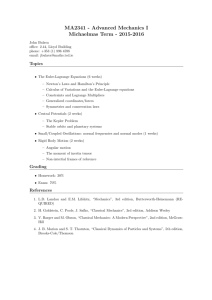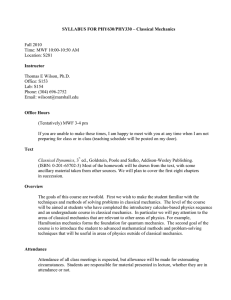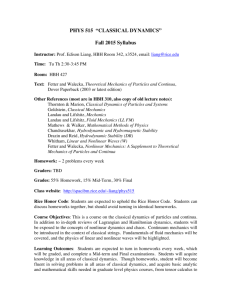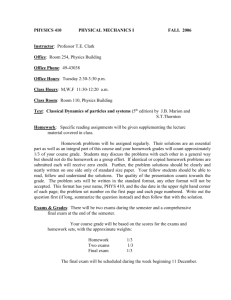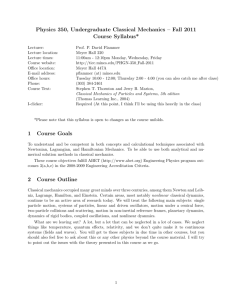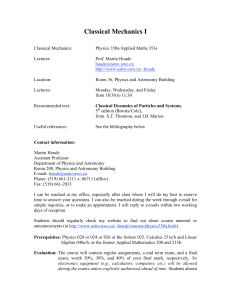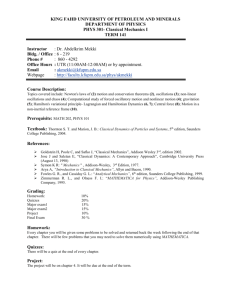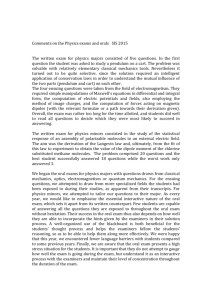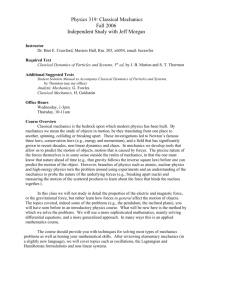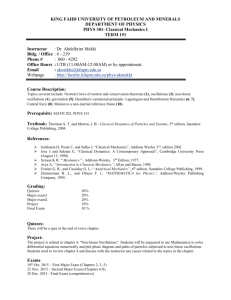Intermediate mechanics
advertisement
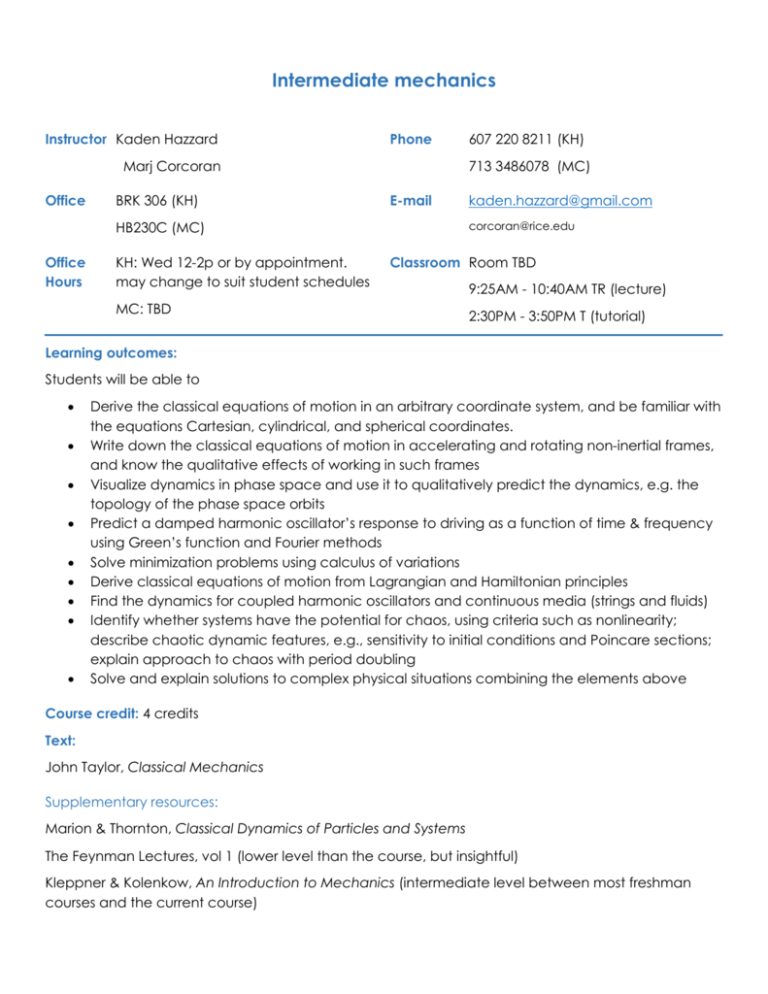
Intermediate mechanics Instructor Kaden Hazzard Phone Marj Corcoran Office BRK 306 (KH) 713 3486078 (MC) E-mail HB230C (MC) Office Hours KH: Wed 12-2p or by appointment. may change to suit student schedules 607 220 8211 (KH) kaden.hazzard@gmail.com corcoran@rice.edu Classroom Room TBD MC: TBD 9:25AM - 10:40AM TR (lecture) 2:30PM - 3:50PM T (tutorial) Learning outcomes: Students will be able to • • • • • • • • • Derive the classical equations of motion in an arbitrary coordinate system, and be familiar with the equations Cartesian, cylindrical, and spherical coordinates. Write down the classical equations of motion in accelerating and rotating non-inertial frames, and know the qualitative effects of working in such frames Visualize dynamics in phase space and use it to qualitatively predict the dynamics, e.g. the topology of the phase space orbits Predict a damped harmonic oscillator’s response to driving as a function of time & frequency using Green’s function and Fourier methods Solve minimization problems using calculus of variations Derive classical equations of motion from Lagrangian and Hamiltonian principles Find the dynamics for coupled harmonic oscillators and continuous media (strings and fluids) Identify whether systems have the potential for chaos, using criteria such as nonlinearity; describe chaotic dynamic features, e.g., sensitivity to initial conditions and Poincare sections; explain approach to chaos with period doubling Solve and explain solutions to complex physical situations combining the elements above Course credit: 4 credits Text: John Taylor, Classical Mechanics Supplementary resources: Marion & Thornton, Classical Dynamics of Particles and Systems The Feynman Lectures, vol 1 (lower level than the course, but insightful) Kleppner & Kolenkow, An Introduction to Mechanics (intermediate level between most freshman courses and the current course) Advanced references: Goldstein, Classical Mechanics Landau and Lifshitz, Mechanics Fetter and Walecka, Theoretical Mechanics of Particles and Continua Steven Strogatz, Nonlinear Dynamics and Chaos Online references: John Baez notes (a mathematician’s viewpoint): http://math.ucr.edu/home/baez/classical/ Homework and evaluation: There generally will be a homework assigned each Thursday, due the following Thursday. Problem sets will be available both online and distributed in class. Students are encouraged to work together in approaching the problems, but should understand and write up their own solutions. A list of other students who they discussed with should be written at the end of the assignment. The homework should clearly explain your approach and calculation; giving the correct answer is insufficient. Additionally, there will usually be “teaser questions” due at the start of most classes, assigned during the previous class. These guide reading and create discussion for the following class, and may be open ended. Full credit is given for thoughtful completion without regard to the correctness of the answer. No more than 5-10 minutes needs to be spent on them. Grades, to zero’th order, are weighted with HW as 45%, teaser questions as 5%, the midterm as 25% and the final as 25%. Perturbative corrections come from my interactions with you during class and office hours, and can only improve your grade. Grader: TBD. The Rice Honor Code applies to all of these assignments. Students may work together on the homework assignments, as discussed above. For the midterm and final exams, students must work alone and may consult only the materials specified on the exam cover page. Videos: We are equipped for the course to be digitally filmed. If this is done, the lectures will be provided on a private web page (owlspace) accessible only to the class. I expect that this would be a useful resource. First, if you have to miss a class, you will be able to catch up. Second, it provides a way to review material (later in the course or after the course), and you can focus more on understanding than note taking during the lectures. You would also be “paying it forward,” as this would be a useful resource for future classes, and for me to improve my teaching. We will discuss this the first day and decide whether we want to utilize this resource. Disability and accommodations: Any student with a disability requiring accommodations in this class is encouraged to contact the instructor after class. Additionally, students should contact the Disabled Student Services office in the Ley Student Center. Page 2
